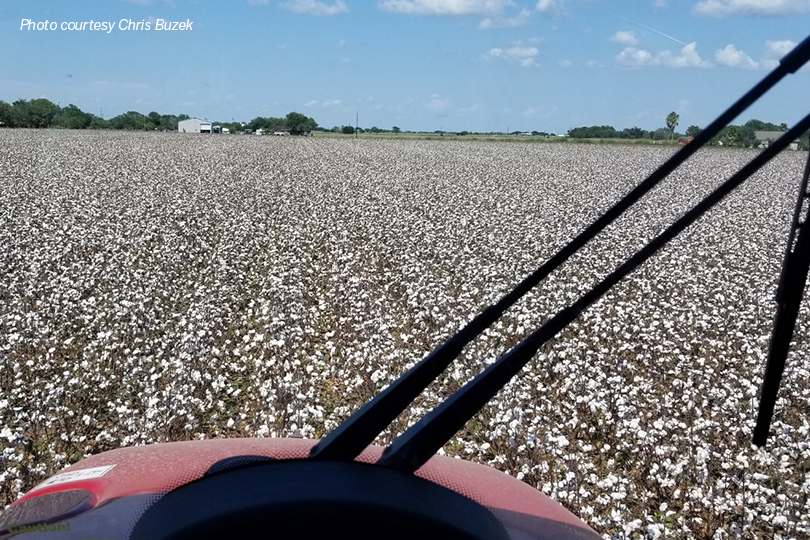By Jennifer Whitlock
Field Editor
Farmers in the Coastal Bend of Texas faced a series of challenges that affected their crop yields and harvest season.
The unusually wet and mild spring and summer sounds like a farmer’s dream come true, but Victoria County Farm Bureau member Chris Buzek said the rainfall was too much, too fast. All year long.
In May, Buzek and fellow Victoria County farmers received 10 inches of rain in less than 24 hours.
“We said ‘Oh, this is terrible!’ But if we only knew what was going to come after that, we’d have stopped there,” he said. “Ever since then, we get a little chance to work in the fields, and then it rains again. We’ve had four or five days lately of clear weather, but we have another week of rain coming up. So we need to hurry up and try to get done what we can and hope for the best.”
Buzek noted the heavy clay soils common to the area can only hold so much water before being oversaturated. When there’s no place for the water to drain, fields turn into ponds.
Some of his cotton was underwater at least twice. Without oxygen, plants cannot survive, so he lost some of the crop then.
The plants that survived needed more fertilizer to make up for the water leaching all the nutrients. But yields were still low.
“The county average is going to be below what we’ve been making. There are some smaller fields here and there that really did well,” Buzek said. “But most bigger fields just didn’t produce this year, and it all boiled down to how much fertilizer we could get on it and how well-drained the soil was in that field.”
The rain put everyone behind, too. Coastal Bend farmers have normally wrapped up cotton harvest by the end of August or first of September. But at the beginning of October, many farmers are still harvesting.
Buzek completed his cotton harvest in mid-September.
“Cottonseed prices are up compared to last year, so that’ll help with ginning costs and maybe even provide a little rebate back to us,” he said. “And the cotton I have had ginned has graded out pretty good. I was concerned about leaf grade just because of the conditions we were in, but it seems like it’s all coming in way better than I thought. Yields are down, but the grade is still there.”
Now, the Coastal Bend farmer is trying to fix ruts created by heavy equipment working in wet soil.
“I’m in the tractor right now, and I’m just trying to beat the rain like usual this year. It’s relentless,” he said during a phone interview in late September. “We’ve had rain all week, so we’re trying to get some fieldwork done while we can.”
In his 12 years of farming, Buzek has never had one quite like this.
“This has to be the toughest year I’ve ever had. You’re trying to climb out of a hole, hoping it gets better. But it doesn’t,” he said. “We’re going to have a struggle next year with the prices of everything. Our inputs and equipment costs are just going up and up. So, it’s been a struggle, and it looks like that’s going to continue.”
Fertilizer prices have skyrocketed, with more increases predicted for 2022. Seed, pesticide, equipment and fuel costs are also on the rise. And Buzek is concerned about what the next few years may bring.
But for now, he’ll remain focused on getting through the remainder of 2021.

